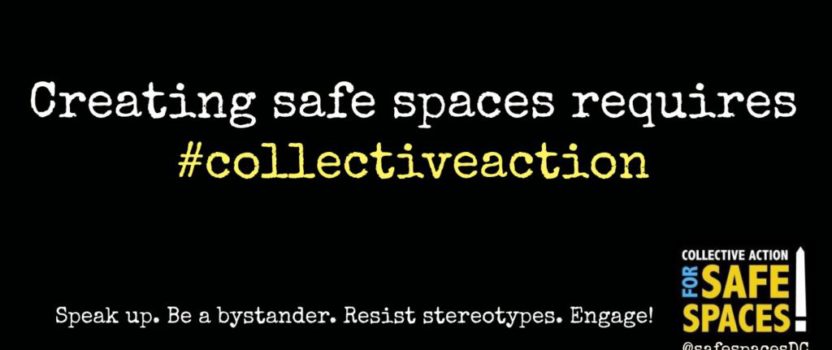PoP Poster Asks, “What Can People Do To Stop Street Harassment?”
Yesterday, DC blog Prince of Petworth (PoP) posted a story in which a reader recounted facing harassment from a group of men in Columbia Heights, asking the question: “What should you do when you’re being harassed?” Though it’s unclear from the original story whether the harassing incident described is gender-based, the behaviors — stalking, verbal threats — were quickly recognized by commenters as similar to the kind of street harassment that women and LGBTQ folks experience because of their gender expression all the time. The rest of the comments, however, ranged everywhere from decent advice to explicit racism.
So, we decided to weigh in. Here are a few things you can do when you’re harassed on the street:
1. Use an assertive response.
Make eye contact with your harasser, tell them their behavior isn’t acceptable and that you want them to stop — if you feel safe! Sometimes no response is the best response, as long as you choose it.
2. Engage a bystander.
In the story that the PoP reader shared, the individual who was being harassed ducked into a coffee shop as an escape. CASS is working hard at conducting community-wide trainings — both for businesses and individuals — to help folks recognize sexual aggression and safely intervene when possible. In the moment, explicitly calling out the harassing behavior and asking people for help can go a long way to de-escalate a situation and find support!
3. Write, draw, speak about it!
If you don’t feel comfortable responding in the moment, there are plenty of things you can do after the fact to channel your frustration and anger, as well as to help raise awareness and spur action. We think this kind of collective action is the key to ending gender-based street harassment once and for all!
4. Become an engaged community member and don’t criminalize youth of color.
When dialogues about violence prevention start, too often the knee-jerk responses reinforce false and damaging stereotypes: that victims should be responsible for their own safety by changing their behavior, and that people of color are inherently criminal. It’s important to recognize these ideologies as what they are: harmful cultural norms — especially for women and LGBTQ people of color, for whom these norms intersect and compound. Rather than reinforcing these stereotypes in moments of fear and frustration, examine how they motivate your own behavior, commit to calling them out, and listen when others do. Building a community in which all marginalized identities are valued and centered is critical to creating a culture in which gender-based violence is not tolerated. If you routinely cross the street when you see groups of black youth, as one PoP commenter suggested, try saying “hello” instead. Think critically about why people end up on the street to ask for money. Act responsibly — and thoughtfully — in your community to address the intersecting injustices that keep us all down.
RECOMMENDED READING
“Memo to White Women: Don’t Be George Zimmerman,” Lauren Taylor and Sarah Trembath
“Sexism and racism are woven into a tight fabric that maintains the privilege of whiteness and of maleness.”
“White Privilege: Unpacking the Invisible Knapsack,” Peggy McIntosh
“I was taught to see racism only in individual acts of meanness, not in invisible systems conferring dominance on my group.” This is a short, accessible piece on white privilege and male privilege. The article is a ‘classic’ by anti-racist educators
“A Black Feminist Critique of Same-Race Street Harassment,” Hawley Fogg-Davis
This article focuses on the experiences of black lesbians and the need for black women to hold black men accountable for upholding black patriarchy.
“Mapping the Margins: Intersectionality, Identity Politics, and Violence Against Women of Color,” Kimberlé Williams Crenshaw
Crenshaw considers the intersections of racism and patriarchy, and how the experiences of women of color remain unrepresented within the discourses of both feminism and anti-racism.

